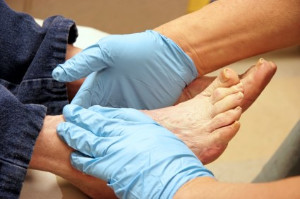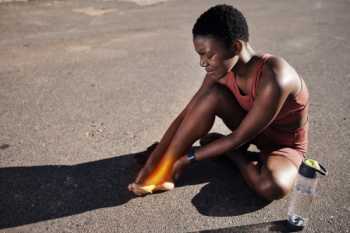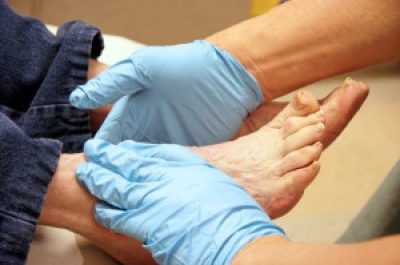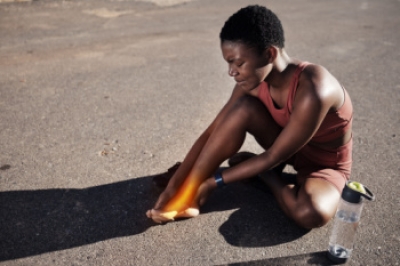Connect With Us
Blog

Anterior tibialis tendonitis occurs when the tendon that runs along the front of the ankle becomes irritated or inflamed from overuse or strain. This tendon connects the front of the shin to the top of the foot and is responsible for lifting the foot during walking. Repetitive running, jumping, or walking uphill can place excessive stress on this tendon. Wearing shoes that lack adequate support or are too tight can also increase tension in this area. People with flat feet, high arches, or muscle weakness in the lower leg are at higher risk of developing this condition. Symptoms include pain along the front of the ankle or top of the foot, swelling, and stiffness that worsens with movement. A podiatrist can help by examining the foot, ordering imaging, and recommending proper treatment. If you have pain in front of the ankle, it is suggested that you make an appointment with a podiatrist for a diagnosis and treatment.
Ankle pain can be caused by a number of problems and may be potentially serious. If you have ankle pain, consult with Dr. David Ungar from Personal Foot Care. Our doctor will assess your condition and provide you with quality foot and ankle treatment.
Ankle pain is any condition that causes pain in the ankle. Due to the fact that the ankle consists of tendons, muscles, bones, and ligaments, ankle pain can come from a number of different conditions.
Causes
The most common causes of ankle pain include:
- Types of arthritis (rheumatoid, osteoarthritis, and gout)
- Ankle sprains
- Broken ankles
- Achilles tendonitis
- Achilles tendon rupture
- Stress fractures
- Bursitis
- Tarsal tunnel syndrome
- Plantar fasciitis
Symptoms
Symptoms of ankle injury vary based upon the condition. Pain may include general pain and discomfort, swelling, aching, redness, bruising, burning or stabbing sensations, and/or loss of sensation.
Diagnosis
Due to the wide variety of potential causes of ankle pain, podiatrists will utilize a number of different methods to properly diagnose ankle pain. This can include asking for personal and family medical histories and of any recent injuries. Further diagnosis may include sensation tests, a physical examination, and potentially x-rays or other imaging tests.
Treatment
Just as the range of causes varies widely, so do treatments. Some more common treatments are rest, ice packs, keeping pressure off the foot, orthotics and braces, medication for inflammation and pain, and surgery.
If you have any questions please feel free to contact our office located in Farmington, MI . We offer the newest diagnostic tools and technology to treat your foot and ankle needs.

Diabetes is a chronic condition that affects how the body regulates blood sugar, potentially leading to complications throughout the body, including the feet. High blood sugar can damage nerves and blood vessels, increasing the risk of infections, ulcers, and poor healing. Common diabetic foot complications include numbness, tingling, swelling, open sores, and infections that may go unnoticed without careful attention. Proper foot care is essential to prevent serious problems. Wash and dry your feet daily, keep toenails trimmed straight across, and regularly inspect your feet for cuts, blisters, or sores. A podiatrist can provide professional evaluation, treat existing issues, recommend protective footwear, and create a personalized foot care plan. If you have diabetes, it is suggested that you are under the care of a podiatrist who can help you manage this serious condition.
Diabetic foot care is important in preventing foot ailments such as ulcers. If you are suffering from diabetes or have any other concerns about your feet, contact Dr. David Ungar from Personal Foot Care. Our doctor can provide the care you need to keep you pain-free and on your feet.
Diabetic Foot Care
Diabetes affects millions of people every year. The condition can damage blood vessels in many parts of the body, especially the feet. Because of this, taking care of your feet is essential if you have diabetes, and having a podiatrist help monitor your foot health is highly recommended.
The Importance of Caring for Your Feet
- Routinely inspect your feet for bruises or sores.
- Wear socks that fit your feet comfortably.
- Wear comfortable shoes that provide adequate support.
Patients with diabetes should have their doctor monitor their blood levels, as blood sugar levels play such a huge role in diabetic care. Monitoring these levels on a regular basis is highly advised.
It is always best to inform your healthcare professional of any concerns you may have regarding your feet, especially for diabetic patients. Early treatment and routine foot examinations are keys to maintaining proper health, especially because severe complications can arise if proper treatment is not applied.
If you have any questions, please feel free to contact our office located in Farmington, MI . We offer the newest diagnostic and treatment technologies for all your foot care needs.

Foot pain can arise from many causes, and its location often reveals the problem. Pain in the heel may signal plantar fasciitis or a heel spur, while pain in the ball of the foot may result from metatarsalgia or a neuroma. Aching arches can stem from flat feet or overuse, and pain along the outer edge might indicate a stress fracture or tendon irritation. Toe pain can develop from bunions, hammertoes, or ingrown nails. Each type of pain may feel sharp, burning, throbbing, or dull, depending on the underlying condition. Wearing improper shoes, standing for long hours, or overtraining can make symptoms worse. If you are experiencing ongoing or severe foot pain that affects your mobility, it is suggested that you see a podiatrist for an accurate diagnosis, and a treatment plan tailored to your needs.
Foot Pain
Foot pain can be extremely painful and debilitating. If you have a foot pain, consult with Dr. David Ungar from Personal Foot Care. Our doctor will assess your condition and provide you with quality foot and ankle treatment.
Causes
Foot pain is a very broad condition that could be caused by one or more ailments. The most common include:
- Bunions
- Hammertoes
- Plantar Fasciitis
- Bone Spurs
- Corns
- Tarsal Tunnel Syndrome
- Ingrown Toenails
- Arthritis (such as Gout, Rheumatoid, and Osteoarthritis)
- Flat Feet
- Injury (from stress fractures, broken toe, foot, ankle, Achilles tendon ruptures, and sprains)
- And more
Diagnosis
To figure out the cause of foot pain, podiatrists utilize several different methods. This can range from simple visual inspections and sensation tests to X-rays and MRI scans. Prior medical history, family medical history, and any recent physical traumatic events will all be taken into consideration for a proper diagnosis.
Treatment
Treatment depends upon the cause of the foot pain. Whether it is resting, staying off the foot, or having surgery; podiatrists have a number of treatment options available for foot pain.
If you have any questions, please feel free to contact our office located in Farmington, MI . We offer the newest diagnostic and treatment technologies for all your foot care needs.






